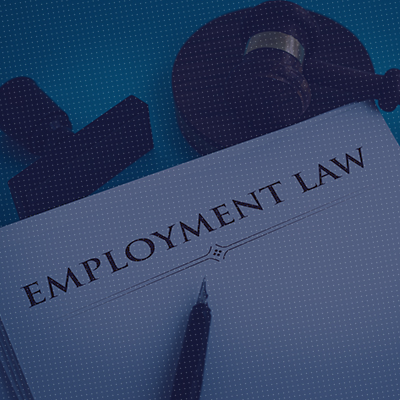‘Labour and employment’ is a concurrent list entry under the Constitution of India. This means both the Union and State Governments have power to enact laws on the said subject matter. While majority of the labour laws are enacted by the Parliament, the implementation and the operational aspects including the rule making power have been delegated to state governments with respect to certain industries by virtue of them being the ‘appropriate government’.
For example, under the Industrial Disputes Act, 1947 (‘ID Act’) until its amendment in 2009, the Central Government is the rule making and implementing authority for industries carried on by or under the authority of the Central Government; mines, oil fields, railways, or for entities established pursuant to any central act. For entities not specifically falling under the Central Government ambit, the appropriate government shall be the respective State Government. Similar definition is provided in various labour laws like the Minimum Wages Act, 1948 and the Contract Labour (Regulation and Abolition) Act, 1970.
In this regard, issues often arise on whether is it the Central Government, or the State Government that is the appropriate government for central public sector undertakings or where the central government held majority stake and is involved in management decisions. Specifically, most of the labour laws state the appropriate government is the Central Government if the business is ‘under the authority’ of the Central Government.
The question as to which is the appropriate government, has come up before the Supreme Court in Heavy Engineering Mazdoor Union v. State of Bihar [(1969) 2 LLJ 549], where the appellant was entirely owned by the Central Government. The Supreme Court held that the term ‘under the authority of’ mean pursuant to the authority which is in the nature of principal-agency relationship. It was held that the powers of the Central Government to operate and manage the industry in this case are derived from the company’s memorandum of association and the articles of association and not by reason of the company being the agent of the Central Government. Accordingly, it was held that the State Government of Bihar is the appropriate government for adjudication of disputes in relation to the industry located in Bihar although the entire share capital was held by the Central Government.
Subsequently in Hindustan Aeronautics Limited v. Workmen [(1975) IILLJ 336 SC], a three-judge Bench of the Supreme Court relying on the Heavy Engineering case (supra) held that the appropriate government concerned in the case of Hindustan Aeronautics Limited’s (a central government public sector undertaking) unit in West Bengal as the state government of West Bengal.
However, the concept took a turn when another three-judge bench of the Hon’ble Supreme Court delivered the judgment in Air India Statutory Corporation v. United Labour Union [(1997) ILLJ 1113 SC] holding, inter alia, that in the case of central public sector undertakings, the appropriate government shall be the Central Government.
Owing to conflicting opinions in Hindustan Aeronautics Limited case and Air India Statutory Corporation case, the matter was subsequently referred to a Constitution Bench in the matter of Steel Authority of India Limited and Ors. v. National Union Waterfront Workers and Ors. [AIR 2001 SC 3527]. In this matter, the Constitutional Bench disagreed with the dicta laid down in Air India Statutory Corporation case (supra) and upheld the decisions in the Heavy Engineering case (supra) and Hindustan Aeronautics Limited case (supra). The Court in this case differentiated the concept of instrumentality of the state pursuant to Article 12 of the Constitution and the concept of carrying on business by or under the authority of the central government under the labour laws.
Post the of Steel Authority of India Limited case, all the public sector entities which are incorporated under the prevailing company law would come under the State government oversight for the purposes of the implementation of labour laws
Interestingly, the ID Act was amended in the year 2009 to amplify the definition of the ‘appropriate government’ and clarified that central government shall be the rule making and implementing authority for any company in which not less than fifty-one per cent. of the paid-up share capital is held by the Central Government or central public sector undertakings.
Notably, the amendment is limited to the ID Act and the definition of the ‘appropriate government’ under the laws like the Minimum Wages Act, 1948; the Contract Labour (Regulation and Abolition) Act, 1970 remain untouched. This has led to a scenario where the Central Government is the appropriate government for central public sector under the ID Act in light of the 2009 amendment while the State Governments are the appropriate governments under the statues like the Minimum Wages Act, 1948.
There have been instances of central government inspecting authorities insisting on compliance with minimum wages notified under the central sphere to central public sector undertakings while the central government has no authority to insist as such considering the definition of appropriate government under the Minimum Wages Act, 1948 and the decision in the Steel Authority case (supra).
This ambiguity or overlapping of jurisdictions between Central and State Governments is expected to be rectified once the longstanding Labour Codes are implemented, bringing in uniform definition for ‘appropriate government’.
While simplifying the definition, the Labour Codes adopt the concept as envisaged under the 2009 amendment of the ID Act to ensure that Central Government remains the appropriate government for central public sector undertakings and in entities where the central government holds 51% or more of the share capital.
[The author is a Principal Associate in the Corporate and M&A Team at Lakshmikumaran & Sridharan Attorneys, Hyderabad]





